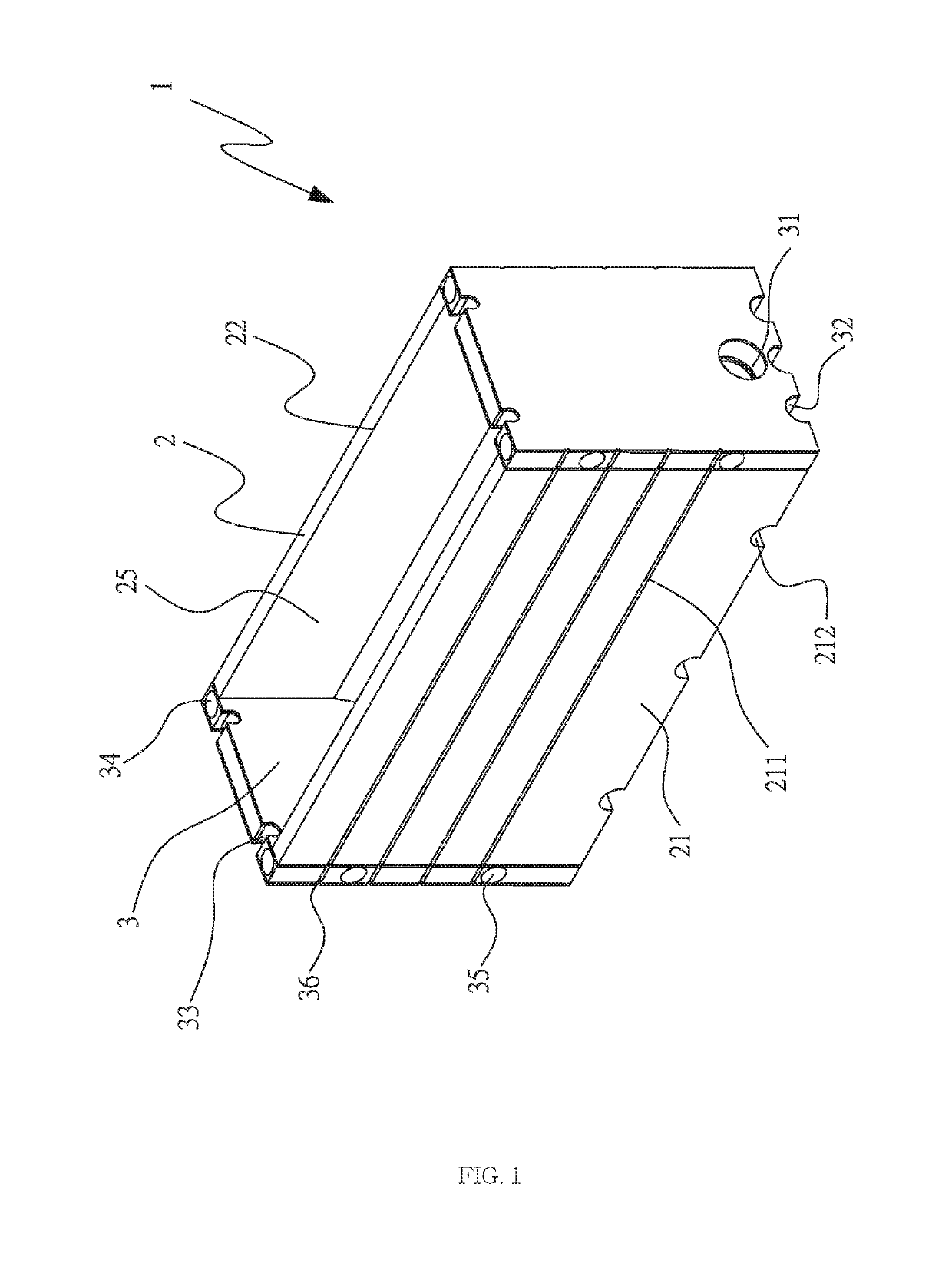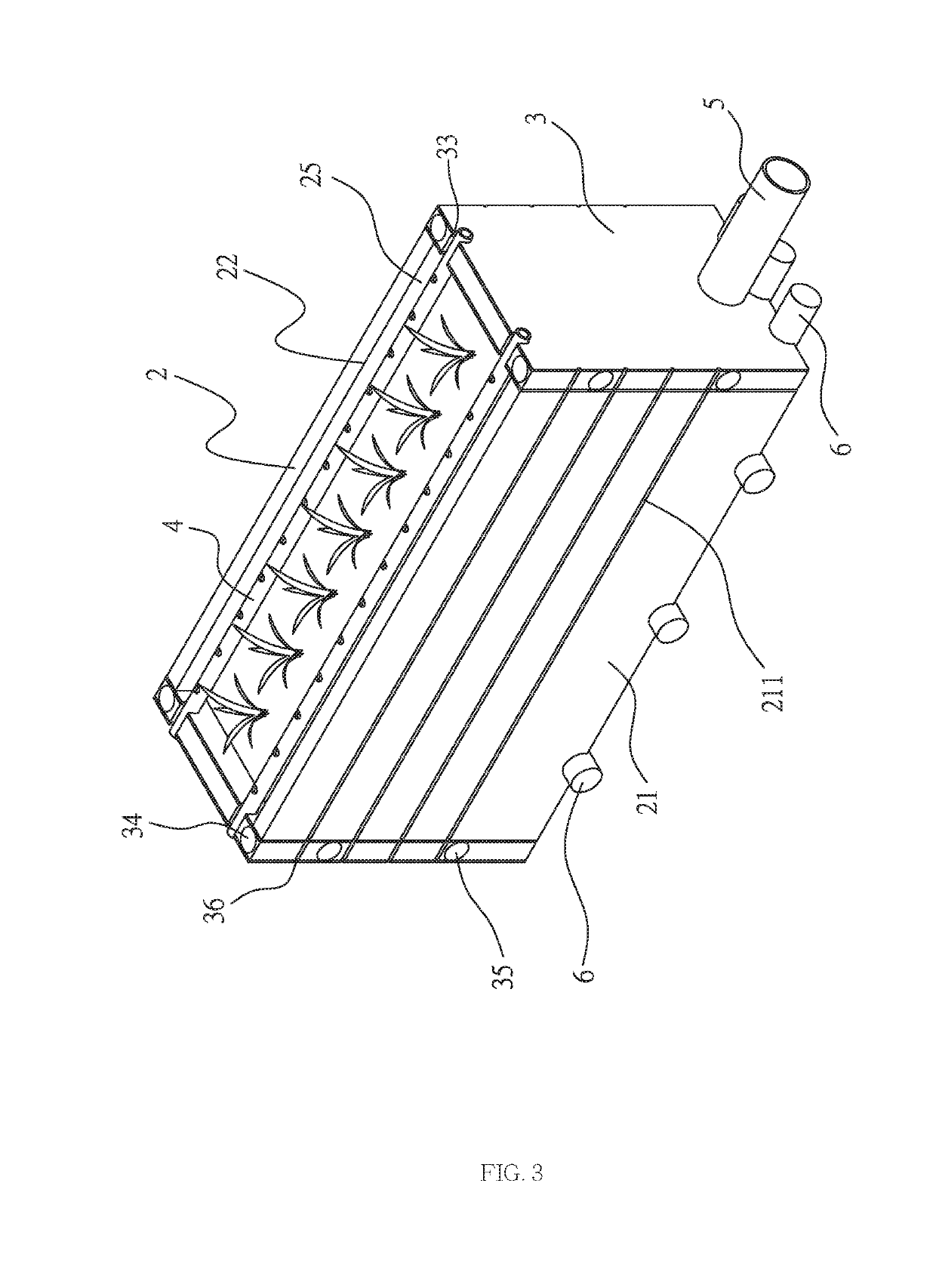Planting structure
a plant structure and plant technology, applied in the field of plant structure, can solve the problems of inconvenience in cleaning vegetables, affecting human health, and affecting so as to promote the growth of crops or plants, reduce agricultural production costs, and increase yields
- Summary
- Abstract
- Description
- Claims
- Application Information
AI Technical Summary
Benefits of technology
Problems solved by technology
Method used
Image
Examples
Embodiment Construction
[0026]Referring to FIG. 1 and FIG. 2, a stereoscopic assembled perspective view and a stereoscopic exploded perspective view show a preferred embodiment of the present invention. It can be clearly observed from the figures that the planting structure 1 comprises a trough 2 and a plurality of lateral covers 3, wherein the trough 2 has at least one outer wall 21, at least one inner wall 22 and a bottom surface 23. The outer wall 21 is formed on two sides of the trough 2, the inner wall 22 is also formed on the two sides of the trough 2, and top portions of the inner walls 22 are integrally extended to top portions of the outer walls 21. The bottom surface 23 is also integrally extended to bottom portions of the outer walls 21, and the trough 2 has a hollow space 24 formed between the outer walls 21, the inner walls 22 and the bottom surface 23. The trough 2 is integrally formed from a plastic material and has the hollow space 24 formed therein, or the trough 2 may be integrally formed...
PUM
 Login to View More
Login to View More Abstract
Description
Claims
Application Information
 Login to View More
Login to View More - R&D
- Intellectual Property
- Life Sciences
- Materials
- Tech Scout
- Unparalleled Data Quality
- Higher Quality Content
- 60% Fewer Hallucinations
Browse by: Latest US Patents, China's latest patents, Technical Efficacy Thesaurus, Application Domain, Technology Topic, Popular Technical Reports.
© 2025 PatSnap. All rights reserved.Legal|Privacy policy|Modern Slavery Act Transparency Statement|Sitemap|About US| Contact US: help@patsnap.com



